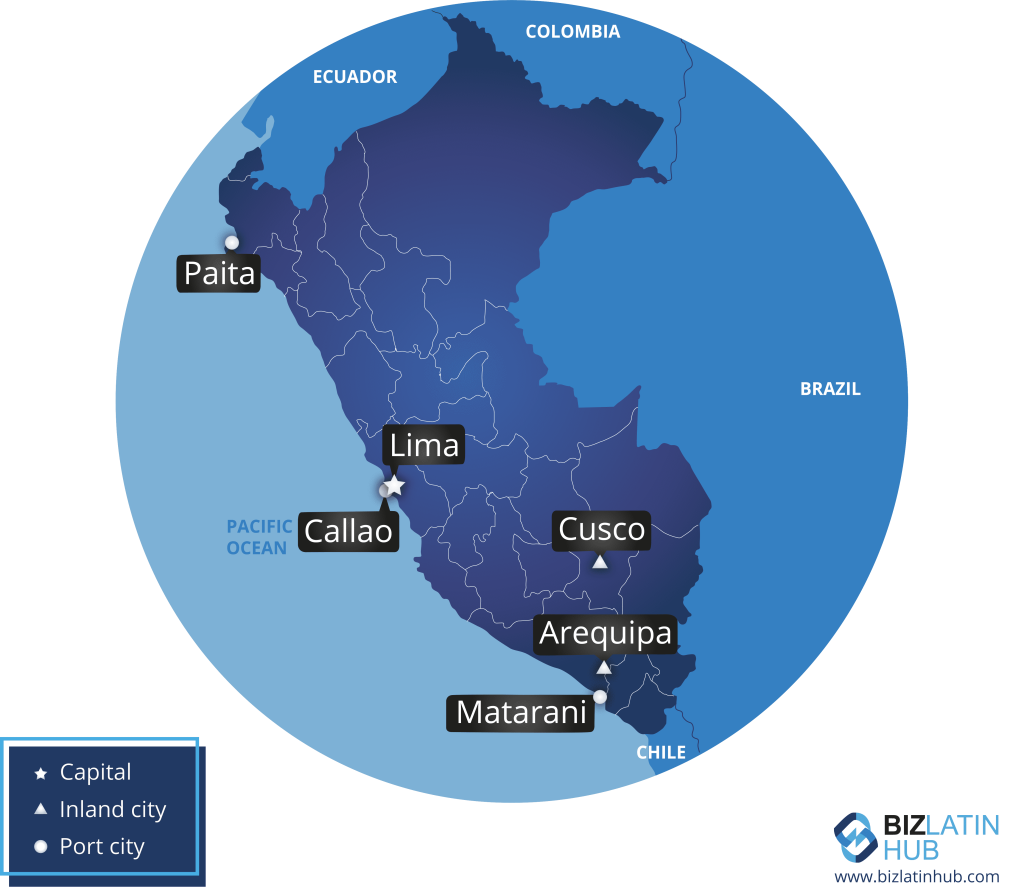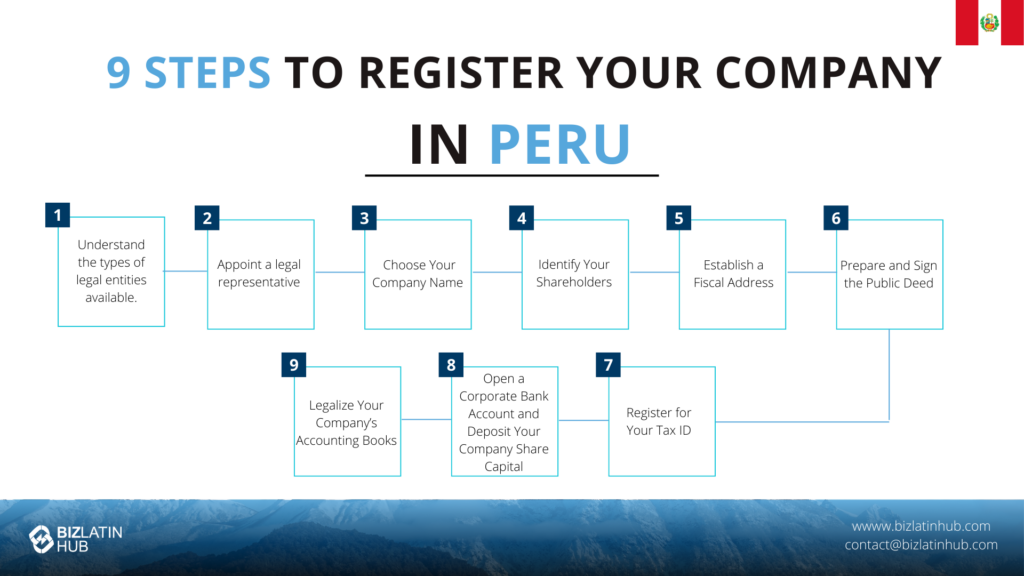Peru is one of the fastest-growing economies in Latin America. Peru’s economy has grown by an average of 6.4 percent per year since 2002 and is projected to continue on an upward trajectory in 2017, fueled by external demand and the return on fixed investment to grow.

LatinFocus panelists expect GDP to accelerate and increase over the coming years. This growth in the Peruvian economy has resulted in an increase in FDI, particularly in the mining and export sectors.
Government policies have encouraged this investment which has benefited investors, local communities, and the economy in general. There is a wide range of business opportunities in Peru, and both local and foreign investors are getting involved. Below we present to you 5 types of legal entities in Peru.
Table of Contents
Types of legal entities in Peru – Which Legal Entity Should You Use?
Do you have a great business idea and are looking to understand the differences in legal entities in Peru? Depending on the activity that you plan to undertake, there are different legal entities in Peru that are regulated by the Peruvian Companies Law under which you can set up your new venture.
Below is a list of 5 types of legal entities in Peru to set up your business, that are most commonly used by foreign investors. Should you require more information regarding each of these legal entities, we recommend that you make contact with a professional company that has an extensive understanding of the legal entities in Peru and has experience in the formation and incorporation of companies depending on the types of operations being conducted.
Joint Stock Company (Sociedad Anónima or S.A)
This type of company is the most popular type of legal entity in Peru for business entities as it’s fairly easy to open. The legal entity requires a minimum of two shareholders and an initial capital contribution of s/.1000; approximately $350. Liability is limited to the amount of the contribution and the joint-stock company must have a Board of Directors and General Manager.
Private Closed Corporation (Sociedad Anónima Cerrada or S.A.C)
One of the types of legal entities in Peru is the Private Closed Corporation. This legal entity requires a minimum of two and a maximum of twenty shareholders. Although a Board of Directors is not necessary, the corporation must have a General Manager.
Public Corporation (Sociedad Anónima Abierta)

For companies with a large number of shareholders, a publicly held corporation can be a good option. To create this legal entity, an initial public offering should be made, the company must have more than 750 shareholders, and/or over 35% of share capital distributed among more than 175 shareholders.
Limited Liability Company (Sociedad Comercial de Responsabilidad Limitada or S.R.L)
A minimum of two and a maximum of twenty partners are allowed. All partners have limited liability and capital is divided up amongst them. This company corporation does not issue shares and its procedures are the same as those of other corporations.
Branch (Sucursal)
Another one of the legal entity in Peru is the Branch (Sucursal). Established outside its legal address, the branch should realize the same activities as its head office. The branch has the same status as a head office but can be considered as an independent company for tax purposes. To open a branch, a permanent legal representative or General Manager must be present.
Biz Latin Hub can help you find your legal entity in Peru
At Biz Latin Hub, we can be your single point of contact for entering and doing business in Peru. Our bilingual team of corporate support experts based in Lima is available to provide you with legal services in Peru as part of an integrated package tailored to your needs, including the likes of company formation, accounting & taxation, corporate legal support, hiring & PEO, and visa processing.
Contact us today to discuss how we can assist you in Peru, or any of the other 17 markets around Latin America and the Caribbean where we have teams in place.
Or read about our team and expert authors.

The information provided here within should not be construed as formal guidance or advice. Please consult a professional for your specific situation. Information provided is for informative purposes only and may not capture all pertinent laws, standards, and best practices. The regulatory landscape is continually evolving; information mentioned may be outdated and/or could undergo changes. The interpretations presented are not official. Some sections are based on the interpretations or views of relevant authorities, but we cannot ensure that these perspectives will be supported in all professional settings.